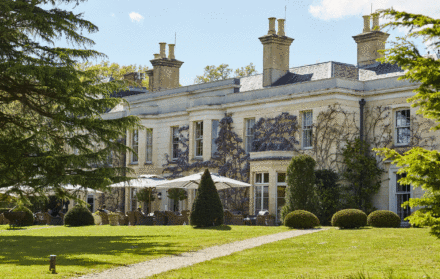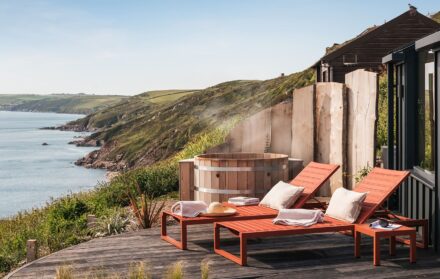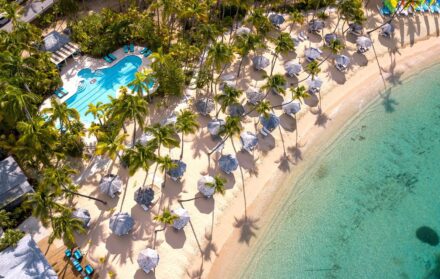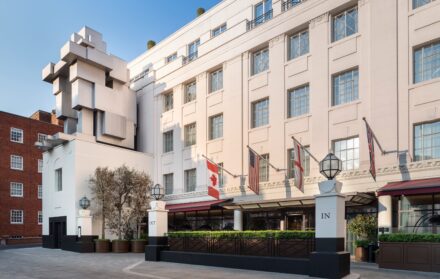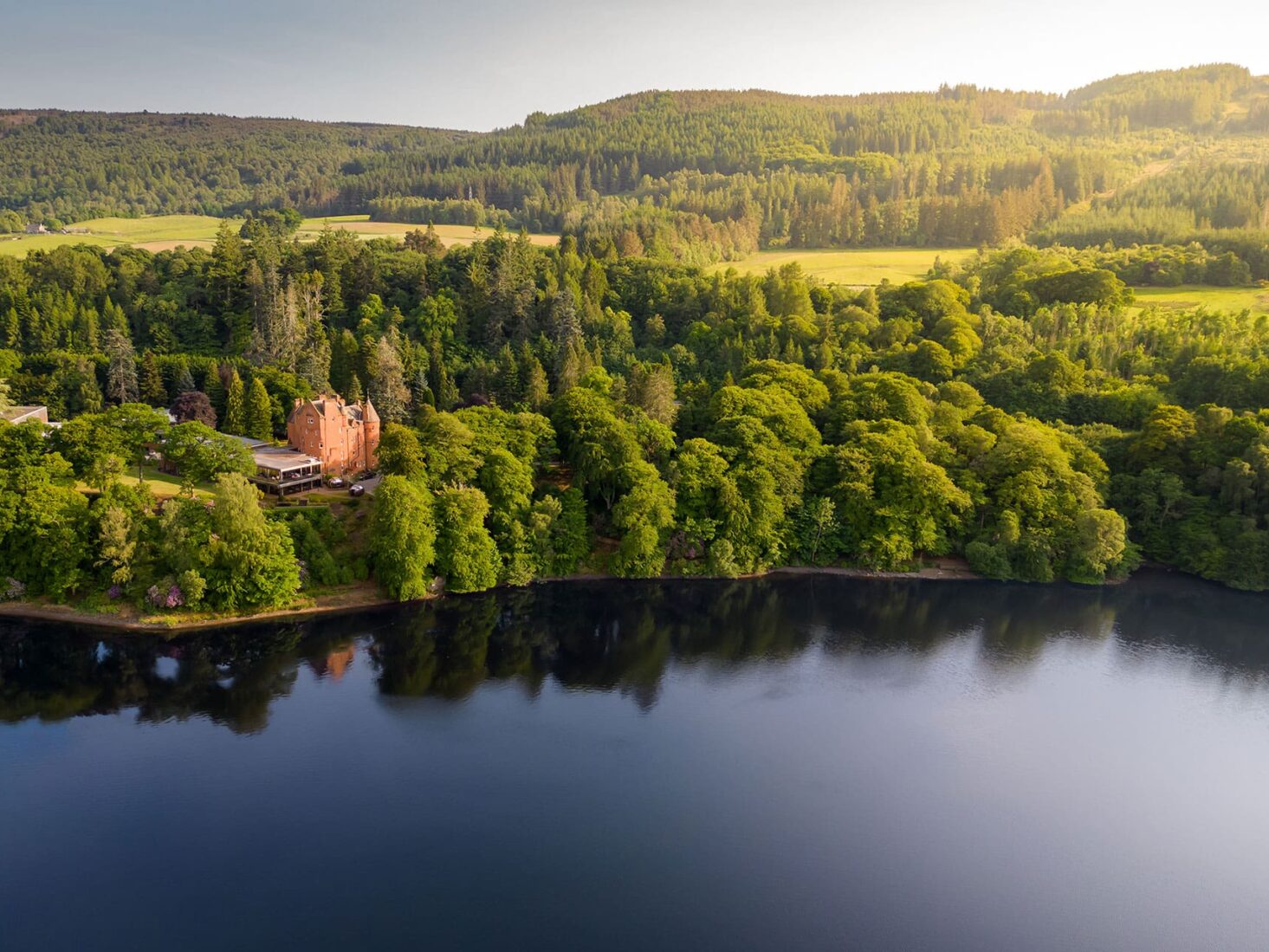
Power trip: A Scottish Highlands road trip in the Porsche Taycan
Faced with the prospect of powering down between charging points, is it possible to enjoy a long-distance road trip in an electric car? Luxury London points a Porsche Taycan in the direction of the Scottish Highlands
We have Scotland’s geography and demographics to thank for its mind-boggling natural beauty. Home to just eight cities and just over eight per cent of the UK’s population, the country’s inhabitants are spread across a land mass a third of the size of the United Kingdom, half of which is accounted for by the Scottish Highlands – a byword for dramatic scenery and wild landscapes.
On an early October morning, Taylor Swift’s Style aptly playing on the radio – the American singer-songwriter recently announced she’d be kicking off the UK leg of her Eras Tour in Edinburgh – I set off from London to experience a Scottish Highlands road trip first hand.
The sky is a vast expanse of unseasonal blue, the sun illuminating the glorious autumnal tones that will frame my journey for the coming days. I’m driving a silver Porsche Taycan Sport Turismo, the German marque’s first electric car. It also happens to be my first time driving an electric vehicle and, as I power up the Taycan, listening for cues as to whether or not the car is ‘on’, I begin to wonder whether it was daringly adventurous or stupidly naïve to embark on a road trip that will, by my reckoning, have to cover up to 250 miles each day. The range of my Taycan is an impressive 304 miles, but still…
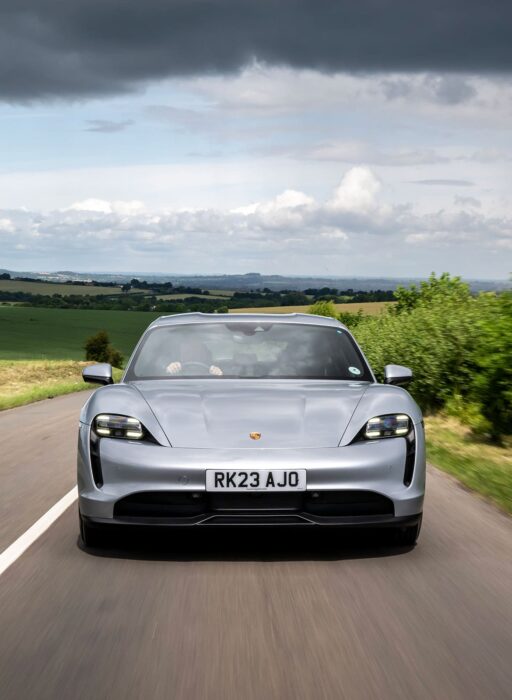
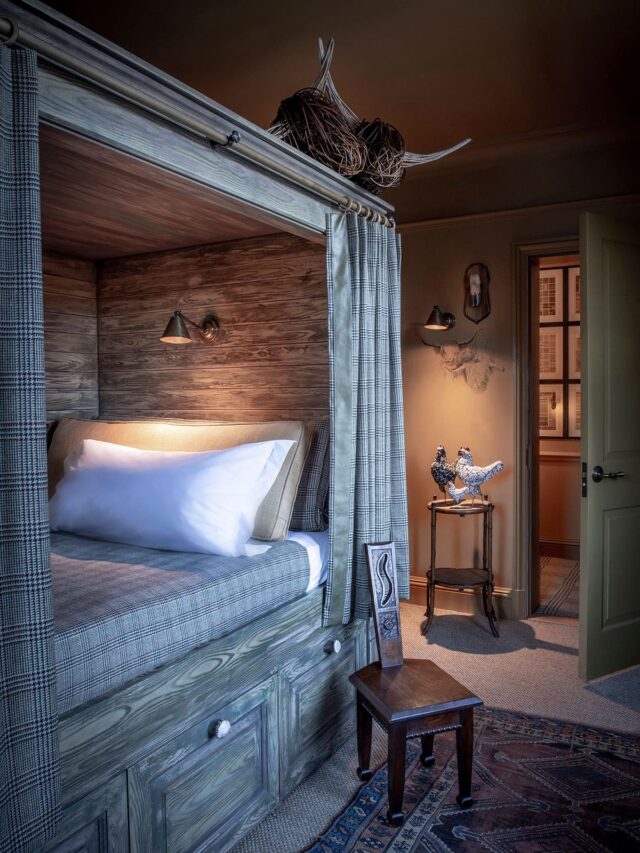
The Fife Arms. Image: Sim Canetty-Clarke
As a long-time (petrol) Porsche owner, I at least feel reassured that I’m mit Porsche – and all its brilliant reliability, performance, sportiness and handling. Plus, I’m now au fait with the very robust My Porsche app. Synced directly to the Taycan, My Porsche essentially maps out each leg of my drive, displaying all the charging stations between A and B, the distances, times and, most crucially, how much charge I have when I both leave and arrive.
I test this tech, and my charging station etiquette, at my first Ionity fast-charging station near Leeds. Ionity is a Porsche joint-venture that, in just six minutes, can top up the Taycan to 62 miles, at a discounted cost of just 30 pence per kilowatt hour for Taycan owners. I arrive comfortably that evening at the impressive Rockliffe Hall in County Durham, where I swap the road journey for a culinary voyage, thanks to the hotel’s three AA Rosette Orangery restaurant.
Head chef Paul Nicholson’s seven course, wine-paired tasting menu transports me with local ingredients that sing with sumptuous flavours, notably the foie gras accented with gingerbread, pecan and tones of Granny Smith apples.
Next morning, I enlist the Porsche app to map out a drive along Scotland’s scenic, coastal A1. Unlike a petrol car, where one simply drives on autopilot, a road trip in an electric car requires a special kind of consciousness – of distances and locations, consumption and usage – evoking that romantic sentiment of travel as the journey as much as the destination.
After a brief charge at an Ionity point in the village of Alnwick, followed by an obligatory stop at its namesake castle (where the Harry Potter films were shot), I reach the Highlands, eventually pitching up at Fonab Castle, the only five-star property in Pitlochry.
The hotel rests on the banks of the picturesque Loch Faskally, a manmade reservoir used for hydro-electric power, and which delivers the first of many arresting views. Dense forests of Scots pine, Douglas fir and oak reflect off the loch’s mirror-still surface. Fonab Castle, built in 1892 as a private home for a wealthy merchant and military family, was a Red Cross auxiliary hospital during the First World War, a shelter for children during the Second World War, and served as offices thereafter. Since 2013, it’s been a smart bolthole that’s become a popular choice for tourists sampling the nearby whisky distilleries.
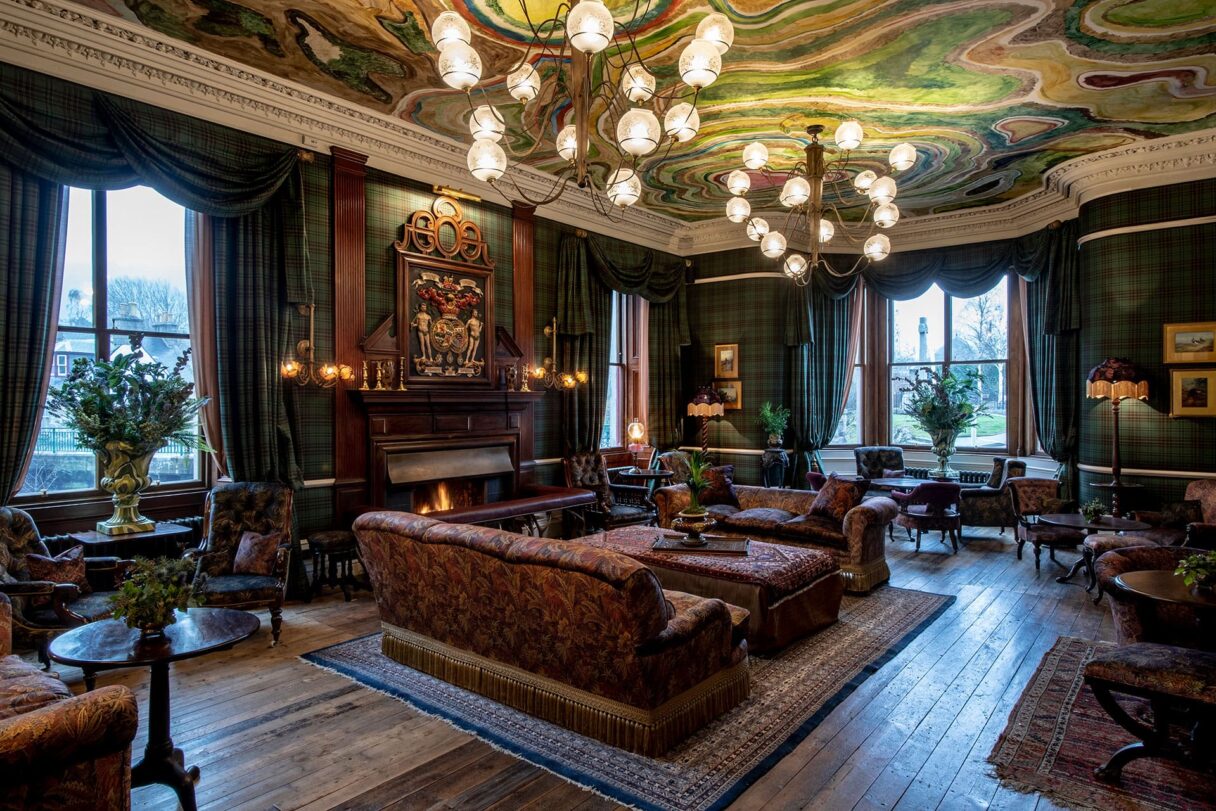
If Fonab Castle is an invitation to a bygone time, then the Fife Arms, a 47-mile drive north through the serene beauty of the Cairngorms National Park, captures the imagination of both past and present. When it opened in 1856, Queen Victoria and Prince Albert had just moved into the newly-constructed Balmoral Castle, turning the Fife Arms into the go-to hotel for courtiers, society’s belle monde and tourists hoping to catch sight of visiting royals.
In more recent decades, the hotel floundered in various private hands, becoming a tired, coach-party hotel for rubberneckers. It reopened in 2018 after an extensive five-year renovation by its current owners, Iwan and Manuela Wirth, of the Hauser & Wirth contemporary art gallery.
Russell Sage Studio (of The Goring and Savoy fame) has given the hotel its charming mix of old and new, but the real magic comes courtesy of the legion of local businesses, craftsmen, historians and artists who played a part in restoring the Fife Arms to its former glory. The result is a masterclass in how to rejuvenate the past for the future.
There are 46 highly-individual and playfully-designed rooms. Mine, named Music and Dancing, celebrates Scottish dance and features a headboard made of violins. Throughout the hotel there are 16,000 artworks and special commissions, which makes the Fife Arms the kind of intellectually-designed space where you have a coffee overlooked by a Picasso and a Lucian Freud. Nothing, it turns out, perks you up like a bout of wild swimming in the nearby River Dee. If you’re brave enough, seek out the lovely Annie Armstrong of Wild Braemar outfitters.
Next up; Inverness and Scotland’s most western coast. Within a few hours of the Fife Arms, the Taycan is on a single-lane track, slowing to manoeuvre cattle grids as I navigate by Gaelic road signs. The Torridon area is a hikers’ dream, home to five Munros (Scottish mountains over 3,000ft) where precipitous peaks, hidden lochs and winding tributaries combine to create a setting from Skyfall.
The heavens darken above into what would become Storm Babet, enhancing the dramatic scenery as I arrive at the five-star The Torridon hotel, which sits at the base of its namesake hill and loch. Before heading to the restaurant for a wine-paired tasting menu, I plug the Taycan into the on-site Porsche Destination Charger. It’s prescient and I’m lucky: within hours, Storm Babet inflicts a power cut on the area.
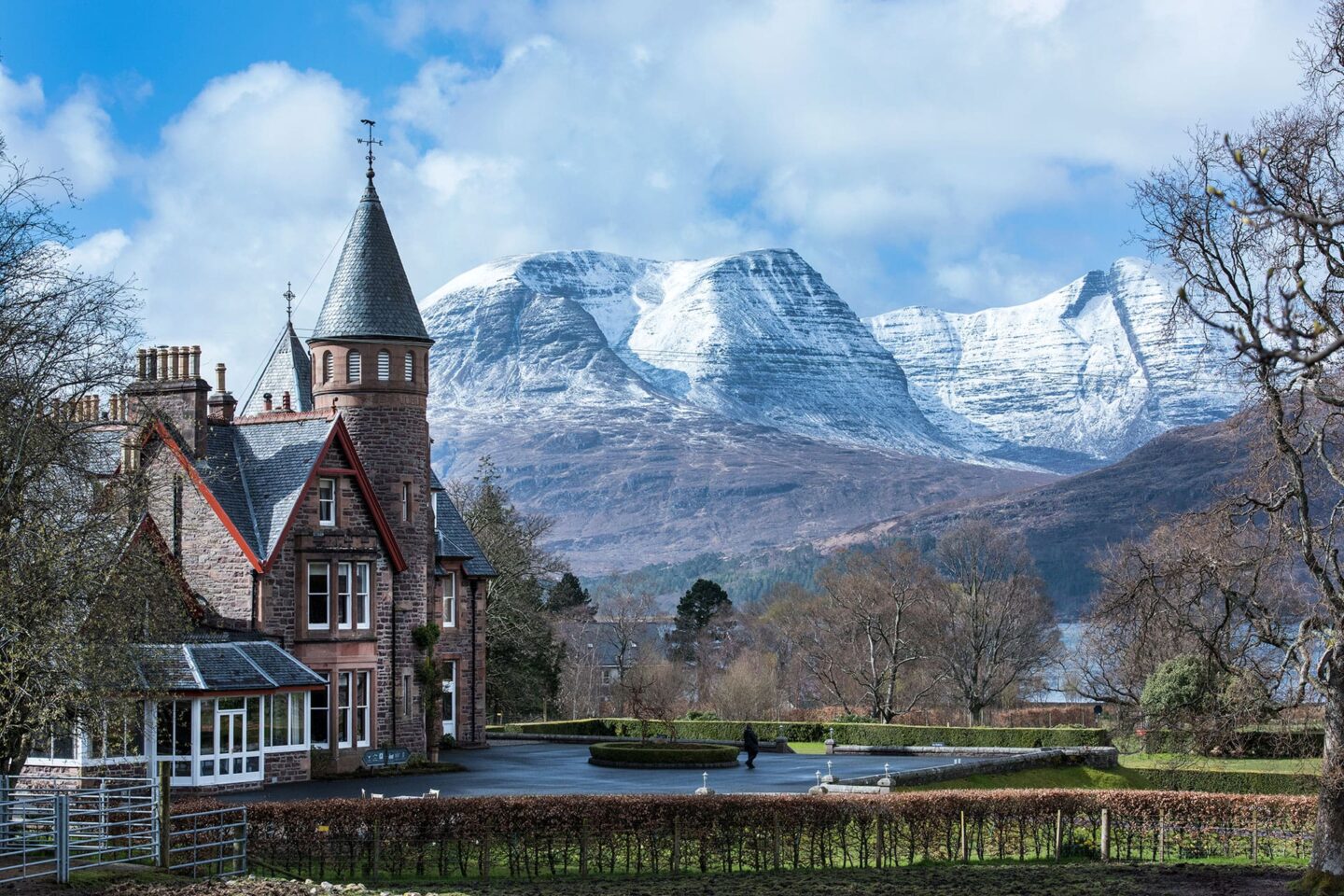
Which means the next morning I can neither sample the breakfast porridge with whisky nor go sea kayaking. Instead, I make a promise to return. Power cut or not, this place literally feels like the end of the earth. If you ever need to check out for a while, make for The Torridon.
Driving back to Edinburgh, through howling wind and lashing rain, the Taycan feels as secure and safe as ever, hugging the road and handling just as my petrol-powered Porsche does at home. As I enter the Scottish capital, stopping for pedestrians, it dawns on me just how perfect an electric car is for exploring this country. Cruising, quietly, stealth-like even, the Taycan politely blends into Scotland’s serene and unspoilt environs.
My final night is spent at the five-star Roseate boutique hotel, a 19th-century townhouse in residential Edinburgh that is located – most prophetically and totally unplanned – a tiara’s throw from Murrayfield Stadium, where Taylor Swift will kick off her tour in June.
Now, if there was ever an excuse for another Scottish road trip…
Rockliffe Hall, from £300 per night, rockliffehall.com; Fonab Castle, from £239 per night, fonabcastlehotel.com; Fife Arms, from £434 per night, thefifearms.com; The Torridon Hotel, from £395 per night, thetorridon.com; Roseate Edinburgh, from £200 per night, roseatehotels.com.

